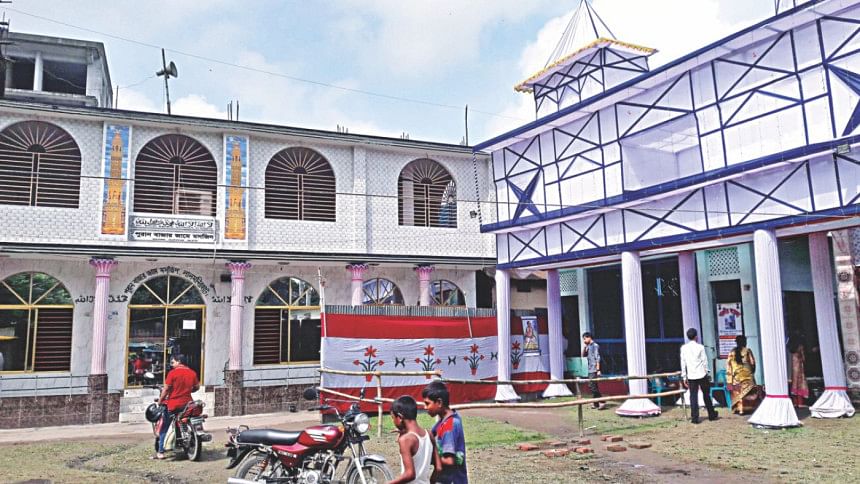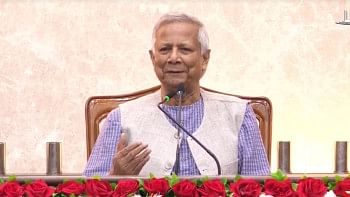Harmony to be proud of

As elsewhere across the country, at the Kalibari Sarbojonin Puja Temple in the centre of Lalmonirhat town, Durga Puja celebrations reached their finale yesterday. To observe the Hindu festivities at this 200-year-old temple is particularly inspiring because just four feet away in the same yard is the Puran Bazar Jam-e Masjid, a local mosque.
With an unblemished heritage of more than six decades of interfaith harmony, the area has become synonymous with religious tolerance.
“We, the townsfolk from both communities have always maintained a very peaceful relationship,” says a local Muslim, Khorshed Alam Dulal. “We invite one another to our festivals like Eid and Durga Puja.”
“The Muslims in our area are always helpful,” says Jibon Kumar Saha, general secretary of the temple's managing committee. “They provide active support and security during our festivals,” he says, noting this year's entirely peaceful Durga Puja was no exception.
Khadem of the mosque, Azizul Islam, says it is the religious duty of all Muslims to protect minority communities. “We must respect all people of other religious beliefs,” he says, “and protect their places of worship and assets.”
The mosque's Imam, Maulana Fazar Ali notes that he had never faced any difficulties from having the temple so close by. “Here, by tradition, the Imam and temple's Purohit maintain close ties,” he says. “We often share our good ideas and values. I urge all people, of all religious communities, to resist communal violence.”
Similarly, temple priest Shree Shankor Chandra Chakrobarty says he had never faced any trouble in conducting puja. “Great love, peace and respect for each other have always prevailed in the area,” he says, adding that during times of Muslim prayers they stop playing instruments at the temple as a sign of respect.
Indeed, the fruitful cooperation between the two places of worship has become so renowned that people journey from afar to see it. “I heard about this harmony,” says Debesh Chandra Das, 48, a tourist from Rajshahi, “So I came to see the temple and mosque in the same yard. To have a heritage of over six decades of communal harmony between Hindus and Muslims is a shining example to all Bangladesh, even to the whole subcontinent.”
Pritinath Chakrobarty, 55, came all the way from India to see the peaceful coexistence at the temple and mosque. “It is such a rare experience to see the two communities conducting all their rituals right beside each other, so peacefully,” he says, hoping he can return again and again.
Founder president of Lalmonirhat's Press Club and prominent journalist Gokul Roy, 66, says the example of coexistence has endured the test of time. The mosque was constructed shortly after the Partition in 1947.
“Many people come here to conduct research on our social framework, to find out what has helped our two communities to perform their religious rituals so peacefully, in such close proximity,” he says. “The religious harmony we have, may it continue forever!”

 For all latest news, follow The Daily Star's Google News channel.
For all latest news, follow The Daily Star's Google News channel. 



Comments